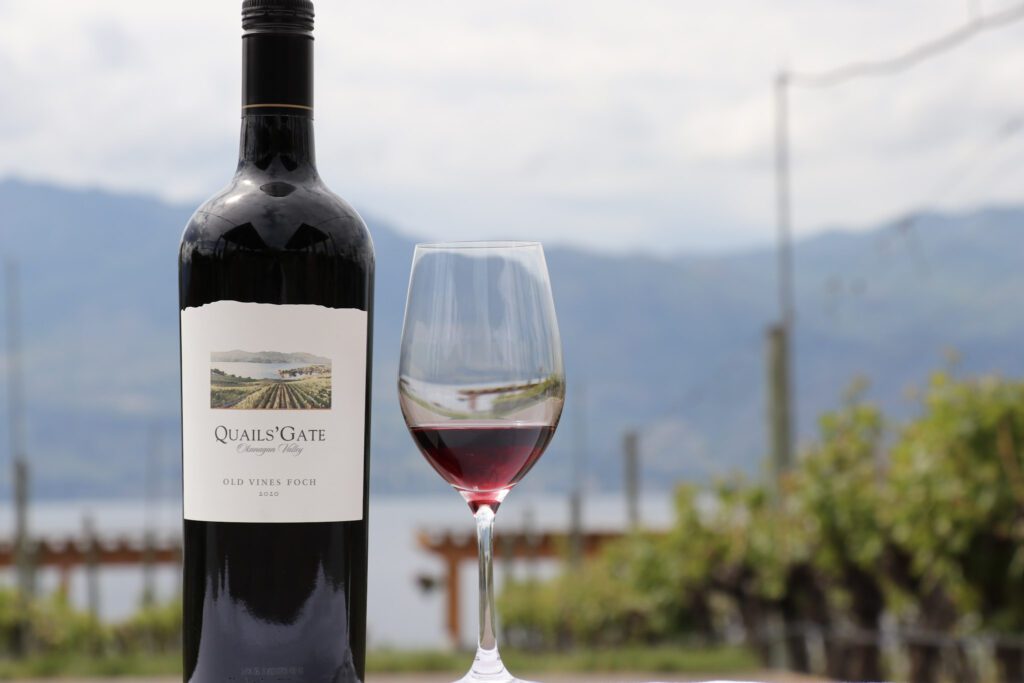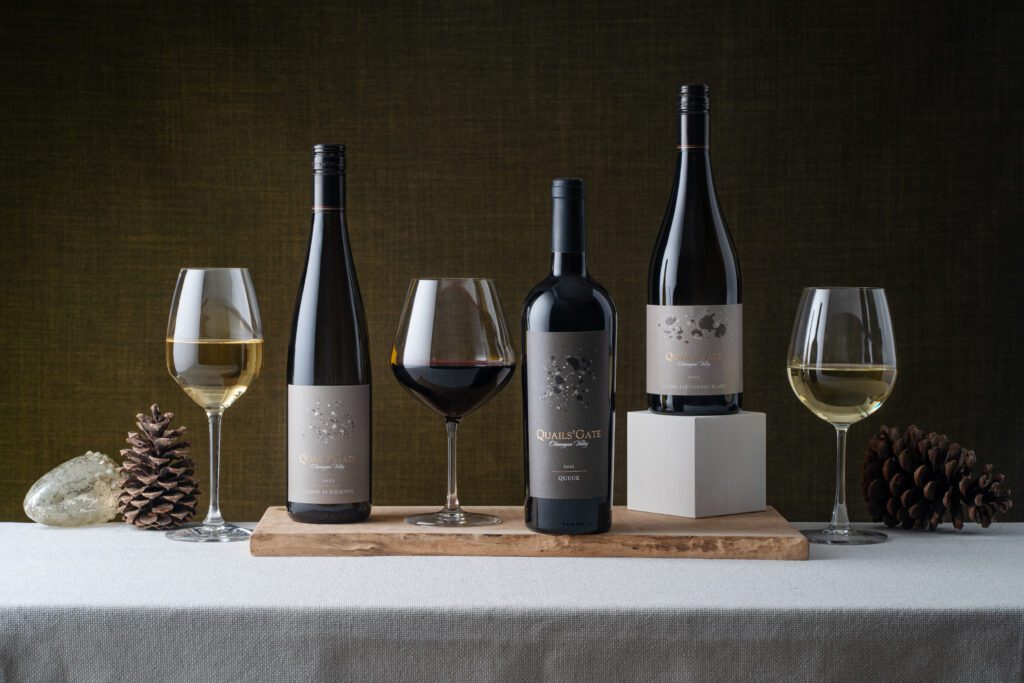This morning, while strolling through the vineyard in my favourite cardigan and crunching leaves beneath my feet, it struck me: fall is finally here! After the hustle and bustle of summer, this season provides a perfect opportunity to slow down and reflect on our journey. One of my favourite wines this time of year is Marechal Foch, a crucial part of Quail’s Gate’s rich legacy. To celebrate, here are my top 5 little-known facts about this remarkable grape. So grab your furry friend, cozy up with a glass, and dive into these fascinating insights!
1.) It was designed for cold climates!
With much of the Okanagan facing significant frost damage in 2023/2024, winter hardiness has become a top concern for many. Classic European grapevines (Vitis vinifera) begin to die below -25°C while Maréchal Foch survives and thrives in these conditions thanks to its hybrid nature. While it sadly won’t improve your fuel economy, Foch is perfectly suited for cold environments. A cross of flavourful European grapes and frost-resistant North American varieties, Foch was developed for harsh winters.
2.) It had another name before officially becoming Maréchal Foch.
In Act 2, Scene 2 of Romeo and Juliet, it is famously proclaimed, “A rose by any other name would smell as sweet.” This insightful line from Shakespeare applies just as well to grapes. Named after the former Supreme Allied Commander, Marshal Ferdinand Foch, the grape was once named after another Frenchman.
First developed by Eugene Kuhlmann (1858-1932) in the 1910s, the grape was initially classified as Kuhlmann 188-2. Kuhlmann was a prolific vine breeder who created many hybrid varieties, often naming them after himself or loved ones. Eventually, the grape was renamed to honour the aforementioned French war hero.

3.) It’s almost exclusively grown in the “new world”.
Once widely cultivated in the Loire Valley, Maréchal Foch is now restricted to just a few hectares across Europe. This decline is primarily due to strict EU regulations aimed at preserving quality, style, and tradition within protected appellations, which generally do not permit hybrid grapes.
Maréchal Foch was first planted in North America in 1946 and now accounts for approximately 96% of the world’s total plantings. The remaining 4% is in Switzerland, where these EU regulations do not apply.
4.) It’s juice is red! Foch is a Teinturier variety.
The vast majority of red wine grapes have clear juice inside and only contain colour within their skins. These skins and juices are fermented together to achieve deep, brooding red wines. Teinturier grapes such as Foch are a notable exception. Similar to Haskap berries, these varieties develop massive amounts of anthocyanin, the compound responsible for pigment in grapes. Most Teinturier grapes are hybrid or North American in origin; however, a few European examples exist, such as Alicante Bouchet, which is widely grown in southern Italy’s boot, step and heal.

5.) We have some of the oldest vines in the valley.
Old vines are prized worldwide for their ability to produce exceptionally fine wines. Much like my social life, as a vine ages, it tends to reduce its output, focusing on quality over quantity. Planted in 1963 by Richard Stewart Jr., Quails’ Gate boasts some of the oldest vines in our region. That’s why we proudly label our wine as “Old Vines Foch” to honour our legacy. Let’s toast 61 years of championing Maréchal Foch, the king of cold climates!
Written by T.R. Montgomery
T.R. is a multi-talented sommelier, public speaker and graphic designer. He holds several certifications, including the highly coveted WSET diploma. Catch T.R. on Kalamalka Lake accidentally dropping his ukelele off a paddle board.





